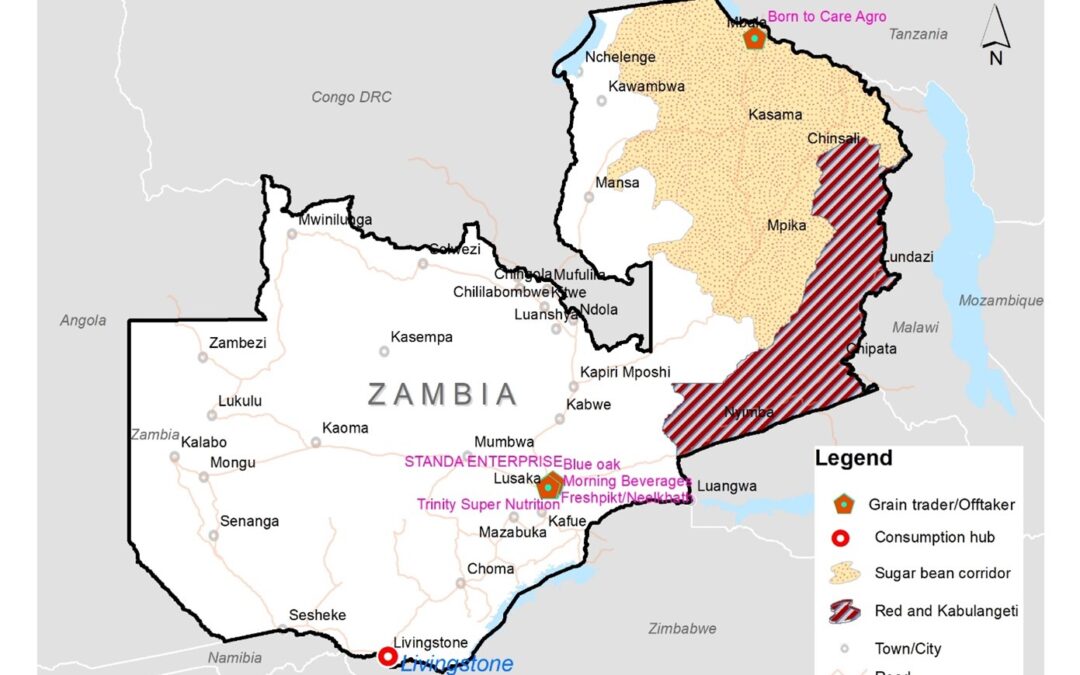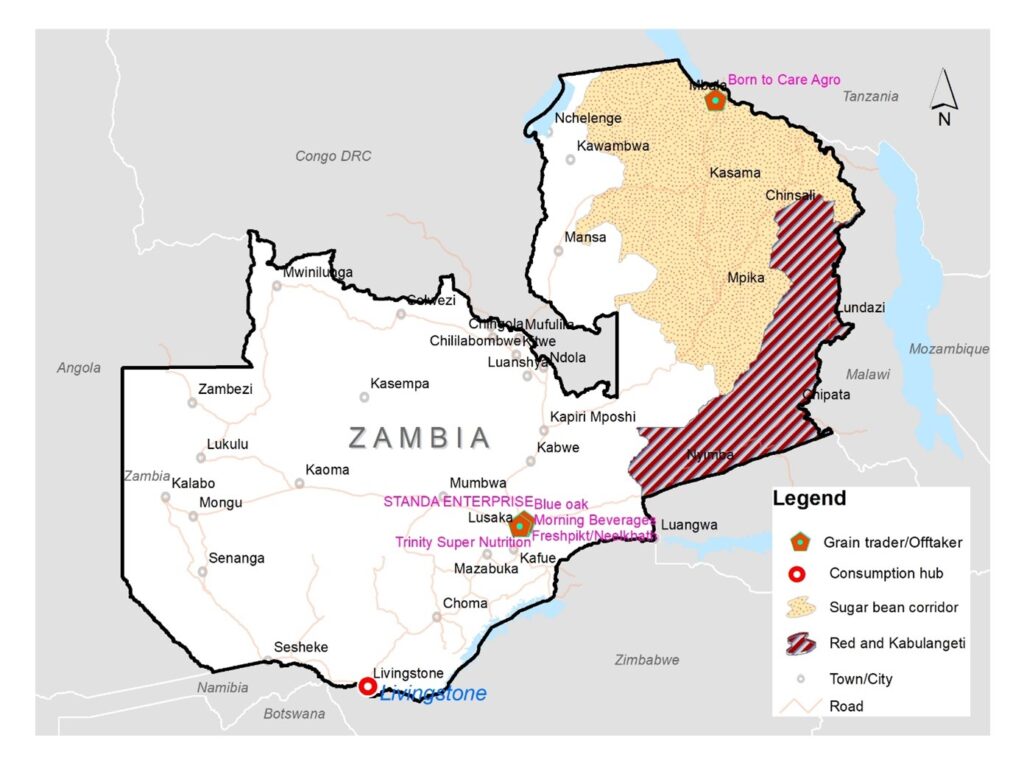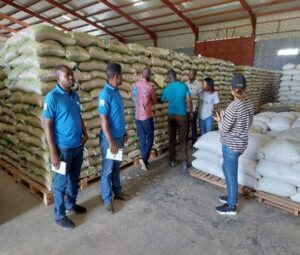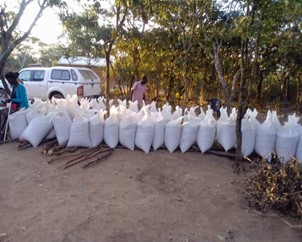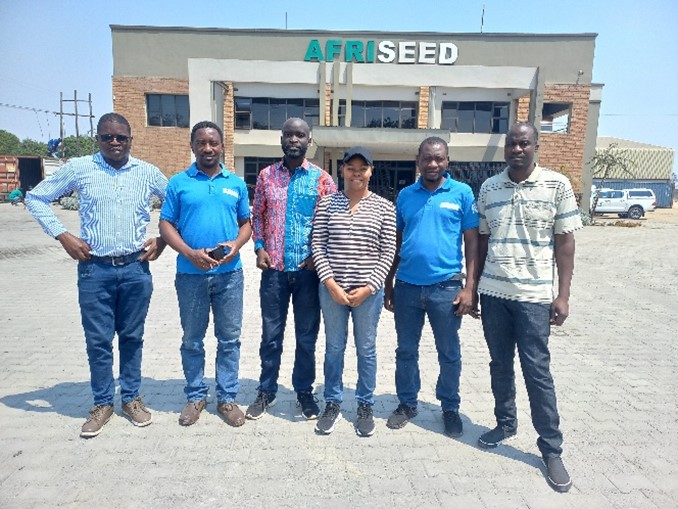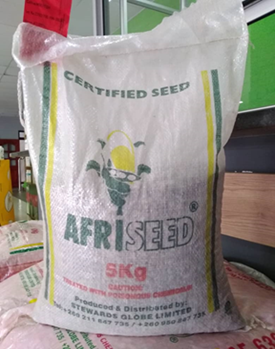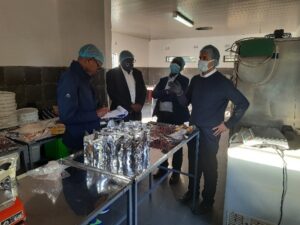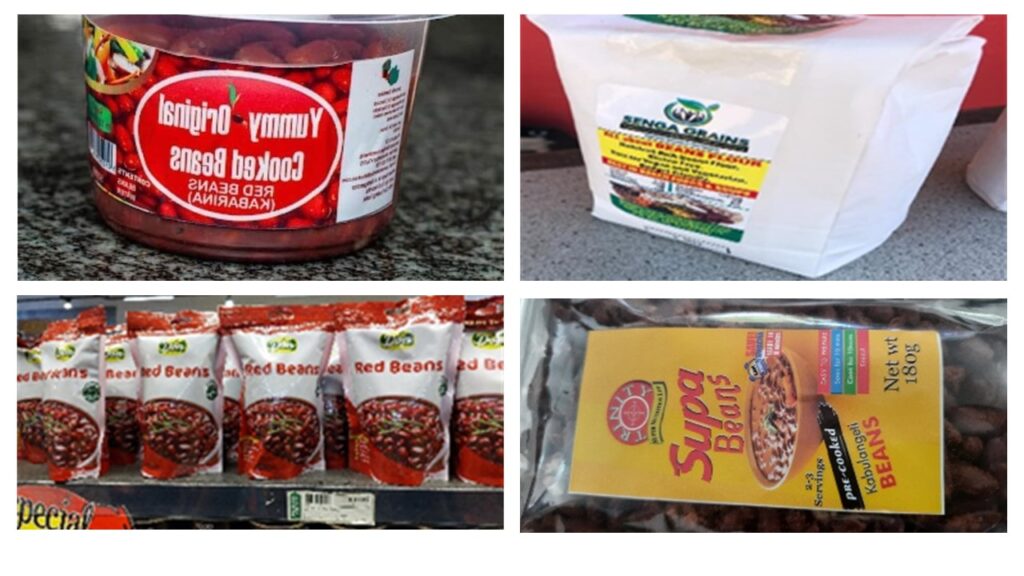Authors: Mwiinga Mulube, Kennedy Muimui, Robert Lungu, Wilson Nkhata, Eliud Birachi, Patricia Onyango, Rachel Muthoni Andriatsitohaina, Noel Templer, Sylvia Kalemera, Paul Aseete, and Jean Claude Rubyogo
Common bean (Phaseolus vulgaris L.) is an important grain legume crop in Zambia that plays a critical role in the livelihoods of a majority of Zambians both as a source of food and income as well as improving agroecosystems. With dwindling fish production and limited access to other animal proteins, beans remain the most essential and accessible protein source for households in rural and urban Zambia. Beans are popular with low income and diet-conscious consumers in Zambia.
The crop is increasingly becoming significant, and both lands under production and productivity have expanded. In the past 15 years, bean productivity has doubled from 350 kg/ha to 650 kg/ha. Similarly, the land under bean production has increased from 65,360 ha to 100,000 ha in the same period (MOA, 2022). Common bean is steadily becoming a reliable cash crop in the country. For instance, beans produced in Zambia are exported to Botswana, Namibia, Angola, Zimbabwe, and South Africa. The accelerated transformation of the common bean from a subsistence crop to a commercial crop in Zambia is accredited to the bean corridor approach. The approach continues to increase efficiency in the flow of bean commodities from production hubs to consumption areas through enhanced distribution and marketing networks in Zambia. It has created strong linkages between value chain actors, i.e., researchers, breeders, farmers, input suppliers, seed companies, off-takers, and agro-processors. The corridor approach has benefitted Zambia’s bean value chain actors in various ways. The approach has linked various grain off-takers to work closely with farmers and other agro-value chain actors, creating employment and business opportunities. Agribusiness entities (Table 1) such as Blue Oak Agro, Good Nature Agro, PAMACO, Born to Care Agro, Fresh Pickt/Vamara, Yanza Amansa, and COMACO are among the grain off-takers reaping the benefits of the corridor approach (Figure 1).
Figure 1. Zambia bean corridor map with off-takers
Table 1. Bean Off-takers in Zambia and their profile
| Off-taker | Major bean types/varieties | Estimated volume traded in 2021 (tons) | Number of farmers engaged | Zone of operations |
| Blue Oak Agro | Sugar bean, Red mottled and white such as Lungwebungu, Mbereshi, and Lwangeni repectively | 2300 | 400 | Northern (Senga, Lunte, and Mporokoso districts). |
| Good Nature Agro | Sugar, Red mottled and Small white. The Varieties include Lungwebungu, Mbereshi and Lwangeni. | 600 | 800 | Northern (Lunte, Senga, and Mporokoso districts) |
| Born to Care Agro | White/yellow, Purple, Red mottled, and Sugar
Varieties include; Mbala mix (landrace), Kabulangeti, Mbereshi and Lungwebungu |
1000 | 2000 | Senga, Mpulungu, Luwingu, Mporokoso, Lunte and Mbala Districts |
| Yanza Amansa | Purple, Sugar, and Red mottled.
Varieties include; Kabulangeti, Lungwebungu, Mbereshi, Lyambai and Lwangeni |
720 | 400 | Central and Northern (Serenje, Senga, Mbala) |
| Standa | Purple , Red & Red mottled, white and yellow.
Varieties include; Kabulangeti, Kabale, Mbereshi, White and yellow (landrace), Lusaka (landrace), Solwezi(Landrace) and Lungwebungu |
500 | Open sourcing | Countrywide ( Mafinga, Chinsali, Isoka, Nakonde, Solwezi, Lunte, Luwingu, Kasama, Mporokosa, Senga and Mbala) |
| COMACO | Purple (Kabulangeti) | Over 1000 | Chinsali, Chama |
Value chain actors meet periodically to share information on markets and other emerging issues (Figure 2). Through such platforms, farmers access market information from the off-takers concerning the bean variety to produce and volumes demanded in the market by consumers. Through the off-taker-farmer partnership, some off-takers such as Blue Oak Agro and Good Nature Agro supply certified seed to farmers and buy back in grain.
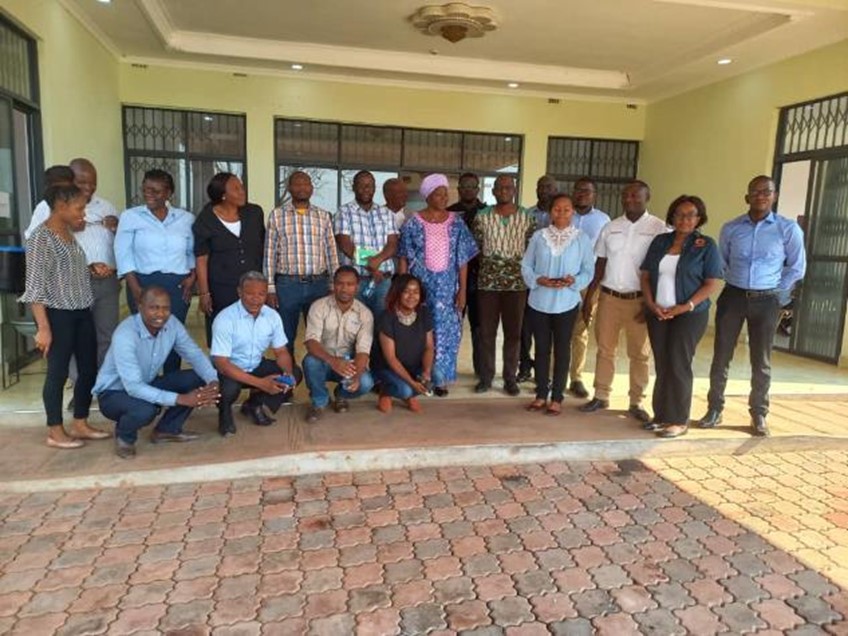
Figure 2: Group photo of the multi-stakeholder meeting on bean marketing in Lusaka; Courtesy of Peter Sawila
Blue Oak, a legume trade company based in Lusaka, is one of the businesses that has benefited extensively from the farmer-off-taker partnership. In 2015, they had ten permanent employees, the company could only aggregate and trade 30 metric tons annually. The company sourced the bean grain from the Soweto market in Lusaka, the country’s largest informal bean market. As mentioned above, sourcing beans from the market came with some challenges such as mixed grains, poor quality, and inconsistent quantities of the demanded market classes. These challenges crippled the company’s ability to tap into the international export market. Through the corridor model, the company was linked to farmer producer groups building a solid farmer-off-taker partnership. The collaborations helped the company increase its market share. Currently, the company employs over 20 permanent staff and has an off-taker capacity of 300 metric tons. Over 80% of this volume is exported to Botswana, Angola, Namibia, and South Africa.
The strong linkages created by the bean corridor approach between seed companies, farmers, and researchers have improved farmers’ access to quality seed, including certified and quality-declared seed. Previously, most farmers used to grow recycled bean seeds of landraces. The platform model has increased farmers awareness of the new, high yielding, market demanded and climate smart bean varieties released by the Zambia Agriculture Research Institute(ZARI) Bean Improvement Programme and where they can access them.
The corridors approach has organized the bean value chain into production, distribution, and consumption hubs, thereby creating business opportunities and facilitating private sector investments along the bean value chain. In the production hubs, the approach has organized and built the capacity of farmers in bean production technologies and also availed highly demanded bean varieties. This intervention has unlocked business opportunities in the supply of highly demanded bean varieties and agro-inputs such as fertilizers and chemicals. Seed companies such as Good Nature Agro, Afriseed, AMAC seed, Kamano, and several Agro-input suppliers have invested significantly in the production hub. Afri-seed and Good Nature agro invested in state-of-the-art color sorting equipment to improve the processing and quality of the bean seed.
Equally, government extension in partnership with non governmental organizations have done a tremendous job promoting good agronomic practices and post-harvest handling technologies, resulting in high bean yields and good grain quality. The approach has opened up opportunities to aggregators/grain off-takers such as Blue Oak Agro, Yanza- Amanza, Standa, COMACO, Born to Care, and Good nature Agro to access premium grain while providing a ready market for bean farmers. Besides supplying local supermarkets, the excellent grain quality has propelled grain off-takers such as Blue Oak and Good Nature Agro to tap into the export market. They supply premium bean grain to Angola, Botswana, India, Namibia, South Africa, and Zimbabwe.
The processing sub-sector is also steadily tapping into the bean value chain. Other than Fresh Pikt company, a baked beans processing company which has been in the market for long, the sector has experienced growth with others processors among them; Trinity Super Nutrition, Morning Beverages (Don products), and Beyond bridge enterprise processing pre-cooked dehydrated beans, pre-cooked ready-to-eat, and pre-cooked frozen beans, respectively. The quest to organize /coordinate the value chain into the private sector driven chain using the corridor approach has opened up. It has further increased private-sector investment opportunities, thereby creating employment and economic development. In partnership with the researchers from Alliance of Bioversity International and the International Centre for Tropical Agriculture, and ZARI are supporting emerging food processing small and medium enterprises (SMEs) by linking them with off-takers and optimizing their products to reap equally from the bean corridor model.
The future prospects look promising with key steps lined up and focusing on:
- A market-oriented breeding program to develop client-preferred bean varieties.
- Accelerating variety turnover
- Establishing a robust private sector-led bean multi-stakeholder platform for Zambia to optimize the efficiency of bean flow in the country and beyond.
- Establishing a business incubation program for the bean value chain to facilitate the growth of SMEs in the bean value chain.
- Expanding a multi-stakeholder platform to include other actors such as agricultural inputs suppliers, financial institutions, and distributors
- Digitalization of climate information, production technologies information, and market information
- Policy Advocacy in the bean value chain to look into input prices, farm gate prices, processing, and consumer behavior.
Reference
- Ministry of Agriculture, (2022). Agricultural production estimates. Lusaka, Zambia.
- Muimui K, Mulube M, Mukuma C, Lungu L and P. Chikuma (2021). ZARI Bean Variety Descriptor, 3rd Edition.

